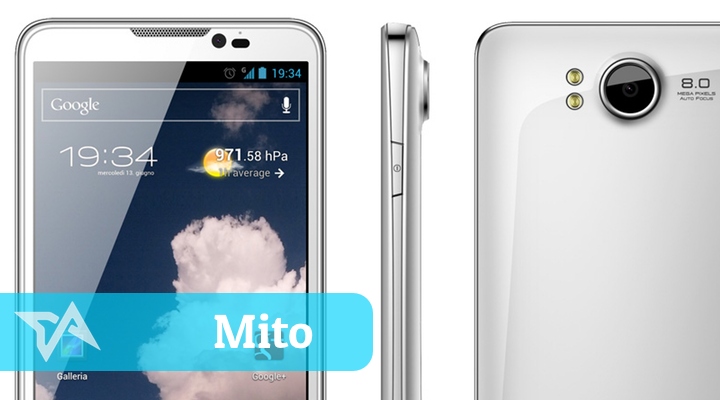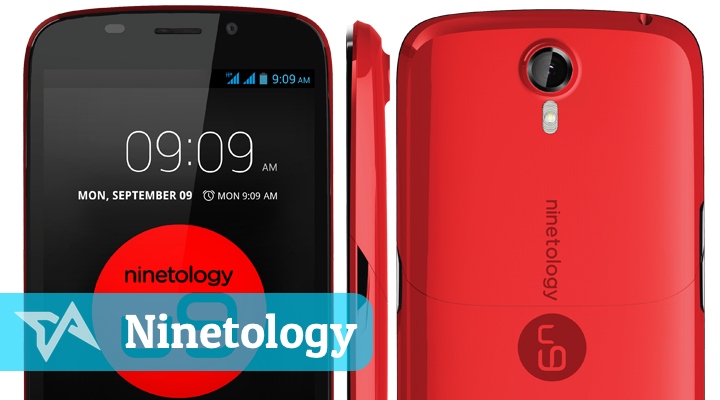Samsung is the world’s – and Asia’s – top smartphone maker. But there are a lot of rival phone-makers out there aiming to dethrone the likes of Samsung and Apple. That competition is especially strong across Asia, where a number of relatively new phone-makers are playing to their strengths in home markets, aiming to get consumers hooked on their own keenly-priced but strongly-specced devices.
Let’s look at 13 of the strongest new contenders across Asia. They’re all – individually and collectively – keen to steal sales from more established phone-makers. To quote a Bob Marley song: If you are a big tree, we are a small axe, sharp and ready, ready to cut you down.
China
1. Xiaomi
This is perhaps the best known of any Asian startup, thanks to the fact that it’s already outselling Apple in China and is on course to sell 20 million smartphones this year. Hiring ex-Google Android VP Hugo Barra also stunned the world this summer.
What’s Xiaomi’s secret? Its smartphones sell for about half the price of Samsung’s and HTC’s flagship phones, yet the strength and versatility of its Android skin (which it calls MIUI) makes them feel like top-quality products. Xiaomi keeps costs low by selling 70 percent of its phones online, and the rest via telco partners. It has no retail business to drain money. It also sells to Hong Kong and Taiwan, and might go global – in select countries, anyway – in 2014.
Lower down in the price range is the Xiaomi Hongmi, which we reckon is the best phone you can get for a mere $130.
Xiaomi models itself on Amazon, according to its founder. But the company’s minimal product line-up often leads to the media comparing it with Apple. Like Apple, Xiaomi has a streaming media box, and recently adapted that software to put into its own smart TV, the MiTV.
- Flagship phone: Xiaomi Mi3 has a 5-inch 1080p HD screen, 1.8GHz NVIDIA Tegra 4 (WDCDMA version) or 2.3GHz Snapdragon 800 (TD-SCDMA version) processors; 13-megapixel back camera and a 2-megapixel front one; Android 4.2; costs $325 (16GB) or $405 (64GB) unlocked.
2. Coolpad
Here’s another newcomer now outselling Apple in China. Coolpad is China’s third biggest smartphone brand in terms of sales, according to Gartner, thanks to a broad line-up of mostly cheap Android-based smartphones, with lots of special versions made for China’s three telcos. They won’t win any design awards and won’t blow your mind, but only 13 percent of Chinese people will buy smartphones that cost over $330 (that’s the psychologically important RMB 2,000 barrier) so the low-end market is vast.
Coolpad has been an OEM for several telcos around the world (producing stuff like the MetroPCS Quatrro 4G phone for T-Mobile in the US), and that’s still part of its business. But Coolpad wants to stand on its own brand overseas, and it’s targeting Southeast Asia as a first step.
- Flagship phone: Coolpad Magview 4 has a 5.9-inch 1080p HD screen; 1.8GHz Tegra 4 processor; 13-megapixel rear camera; Android 4.2; costs a whopping $650 unlocked.
3. OPPO
OPPO is another Chinese phone-maker that’s looking to be big overseas as well as at home. But, despite spending big on advertising with Hollywood faces, OPPO is struggling to get brand recognition in its native China.
The company is aiming globally with its newest flagship, the OPPO N1. In China, the phone comes with OPPO’s own Android skin, but for the rest of the world it’s the first phone to pack CyanogenMod’s new OS, potentially making it a big draw for Android geeks.
Indonesia, a young and fast-developing mobile market, is a target market for OPPO.
- Flagship phone: OPPO N1 has a 5.9-inch 1080p HD screen; 1.7 GHz Snapdragon 600 processor; 13-megapixel pivoting camera; Android 4.2; costs $570 unlocked.
India
4. Micromax
Of all the firms on our list, Micromax is the closest to its goal of beating Samsung. Micromax shipped two million of its Android-based phones in India from April to June, out of a total of 9.3 million smartphones hitting shelves in the country in that period.
Later this year it will venture overseas by launching in Russia and Romania, two developing markets that it reckons have a strong desire for more affordable smartphones.
- Flagship phone: Micromax A250 has a 5-inch 1080p HD screen; 1.5 GHz MediaTek quad-core processor; 13-megapixel rear camera and 5-megapixel front one; Android 4.2; costs $325 unlocked.
5. Karbonn
In India, local brands like Micromax and Karbonn shipped over half of the smartphones in the country during the second quarter of 2013, representing a massive challenge to Samsung.
Karbonn is a bit smaller than Micromax, but both are growing strongly.
- Flagship phone: Karbonn Titanium S9 has a 5.2-inch 1080p HD screen; 1.2 GHz processor; 13-megapixel rear camera; Android 4.2; costs $295 unlocked.
6. Xolo
Though smaller than its two compatriot rivals, Xolo is also keen for a slice of India’s low-end to mid-range smartphone market. Xolo looks set to be India’s first phone brand to sell a 4G phone in the country.
- Flagship phone: Xolo Q900 has a 4.7-inch 720p HD screen; 1.2 GHz Mediatek processor; 8-megapixel rear camera and 2-megapixel front one; Android 4.2; costs $212 unlocked.
Indonesia
7. Smartfren
Smartfren is different from the others in this list in that it’s a mobile telco company. It has 12.5 million subscribers, and it’s pushing forward Indonesia’s shift to Android with its own competitively-priced smartphones.
In our experience, the cheap components can lead to a laggy and sub-par experience on Smarfren’s phones, but then they do cost well under $200 unlocked. Still, Xiaomi’s cheapest phone is only $130 but has much stronger specs and doesn’t feel laggy, so Smartfren (and many others on this list) have some catching up to do on their sub-$200 phones.
- Flagship phone: Smartren Andromax U 4.5 Limited has a 4.5-inch screen at just 960 x 540 pixels; 1.2 GHz Snapdragon processor; 8-megapixel rear camera and 2-megapixel front one; Android 4.1; costs $153 unlocked.
8. Evercoss
The designs of Evercoss phones tend to be pretty bad and derivative, making it the least convincing brand on this list. Nonetheless, it’s trying hard to evolve beyond its origin in feature phones, and even changed its name from ‘Cross’ to something more distinctive ahead of a possible foray into neighboring Southeast Asian markets.
Evercoss is aiming at smartphones representing 30 percent of its sales revenue in 2013. It also sells Android tablets.
- Flagship phone: Evercoss A66 has has a 5-inch screen at just 960 x 540 pixels; 1.2 GHz processor; 13-megapixel rear camera and 3-megapixel front one; Android 4.2; costs $170 unlocked.
9. Cyrus
As with Evercoss’ models, the Cyrus phones are pretty badly specced – but then they are half the price of the flagships from Xiaomi, Micromax, et al. This is the ultra low end of the smartphone market.
In a nation that’s crazy about BlackBerry phones and BBM, Cyrus is wisely pre-installing the new BBM Android app on its phones, and marketing them heavily as replacements for the nation’s beloved BlackBerry handsets.
- Flagship phone: Cyrus Cerry has a 5.3-inch but low-res screen (960 x 540 pixels); 1.2 GHZ quad-core processor; 8-megapixel rear camera and 0.3-megapixel front one; Android 4.1; costs $160 unlocked.
10. Mito
Mito sells tablets, feature phones, and smartphones. It’s based in Indonesia but it also operates in India. 80 percent of its sales are low-end, feature phone devices. The company hopes to sell two to three million units this year, so it’s not going to sell that many smartphones, but it’s still one to watch as its ratio of smartphone sales increases.
- Flagship phone: Mito A355 has a 4.8-inch 720p HD screen; 1.2 GHZ Mediatek quad-core processor; 12-megapixel rear camera and 2-megapixel front one; Android 4.2; costs $180 unlocked.
Malaysia
11. Ninetology
With an emphasis on style and a bit more attention paid to design than is evident in the others on this list, Malaysia’s Ninetology is already, it claims, Malaysia’s second biggest phone-maker (behind, inevitably, Samsung).
Last week, this Malaysian firm launched in neigboring Indonesia.
- Flagship phone: Ninetology Z1+ has a 5-inch 720p HD screen; 1.2 GHZ quad-core Mediatek processor; 13-megapixel rear camera and 5-megapixel front one; Android 4.2; costs $410 unlocked.
Thailand
12. I-Mobile
Like Cyrus and Mito on this list, Thailand’s I-Mobile is slowly transitioning from being a cloner of other people’s feature phones to a maker of its own Android devices. Its new IQ range of phones this year packs in a commendable amount of camera for less that $300, which is a good idea for a country that’s so crazy about Instagram.
- Flagship phone: I-Mobile IQ XA has a 4.7-inch 720p HD screen; 1.2 GHZ Mediatek quad-core processor; 18-megapixel rear camera and 8-megapixel front one; Android 4.2; costs $283 unlocked.
Vietnam
13. FPT
Part of the massive FPT (FPT:VN) conglomerate that also encompasses a telecoms business.
FPT has set the goal of manufacturing and selling 600,000 smartphones in Vietnam in 2013. This will be a shift from what FPT was shipping last year, which was centered on feature phones. It will mean that smartphones make up 70 percent of its mobile output.
- Flagship phone: FPT IV has a 4.5-inch but low-res screen (960 x 540 pixels); 1.2 GHZ Snapdragon quad-core processor; 5-megapixel rear camera and 0.3-megapixel front one; Android 4.1; costs $175 unlocked.
Samsung has a lot more to worry about besides those. This is far from an exhaustive list, and there are more grass-roots smartphone makers across Asia out there.
Also, let’s not forget that there are some major rivals in the Android space too. Samsung’s closest rival in China is actually Lenovo. And there are plenty more, well-established brands keen to be the top shipper of Android smartphones – like LG, Huawei, HTC, Motorola, to name but four.
Learn more about technology and such topics with our associate partner.









































